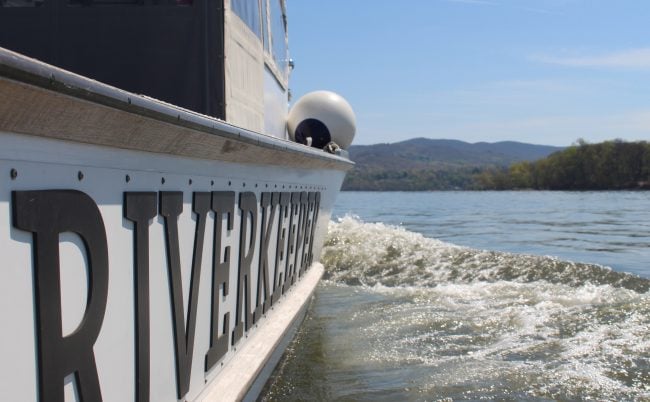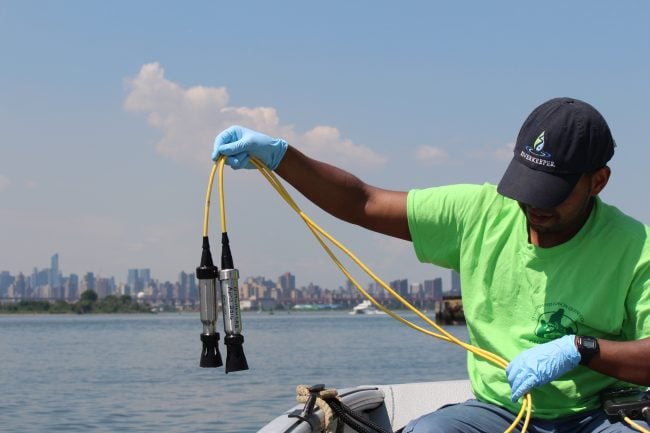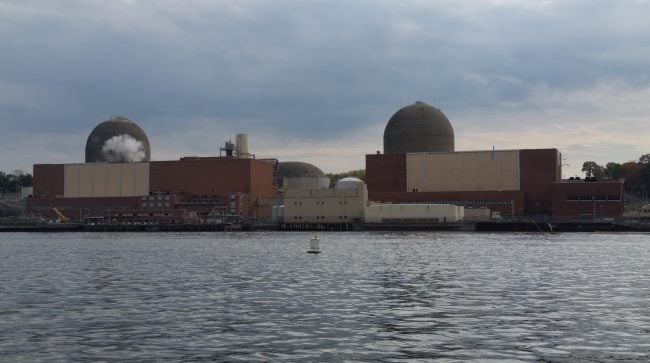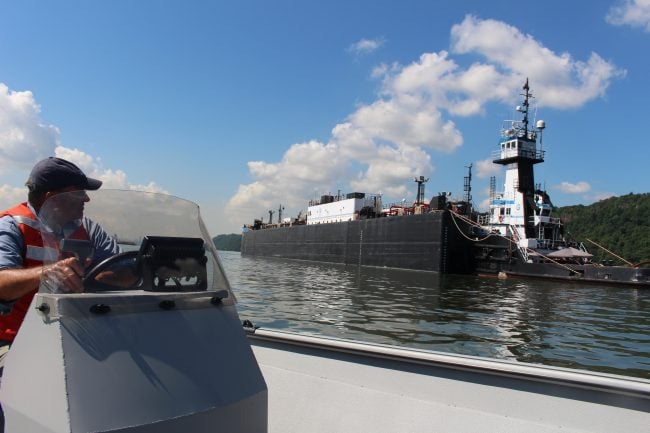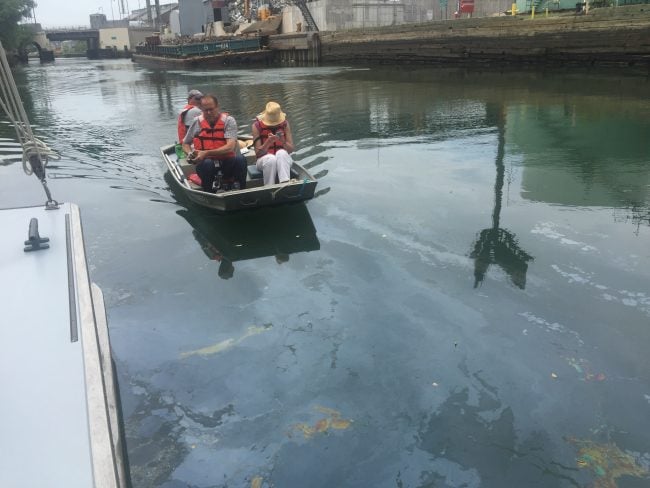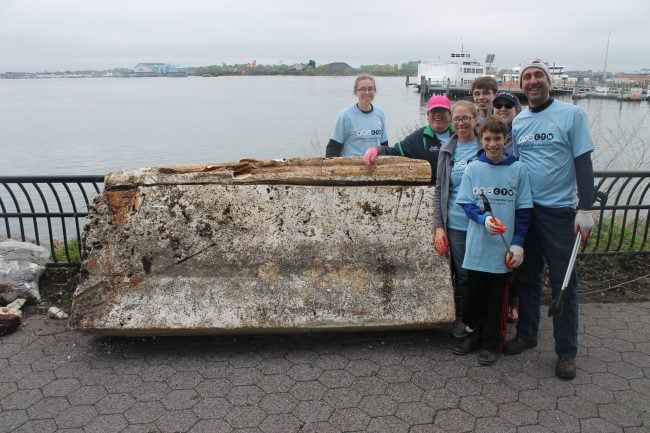2016 Victories for the Hudson and Your Drinking Water
Riverkeeper’s 50th Anniversary year has been one of our most successful yet in our efforts to protect the Hudson River, its tributaries and precious drinking water. These “Riverkeeper Victories” are yours as well: our donors, activists and volunteers are the driver of our success. As we look forward to 2017 and beyond, we’ll need you more than ever. Challenges to clean water will continue to mount and Riverkeeper must rise to meet them.
Fighting poisoned drinking water in Newburgh. Riverkeeper has voiced serious concerns about pollution in the reservoir serving 29,000 Newburgh residents. In 2016, we helped win state commitments to make free blood testing available to all residents, designate the base a Superfund site and create a new plan to protect Newburgh’s water supply for the future.
Expanding water quality monitoring. With new community partners, Riverkeeper expanded its water quality monitoring to more than 400 locations, yielding 4,750 samples, showing where and when the water is safe for swimming. For the first time, we went as far as the source of the Hudson River, where scientists sampled Lake Tear of the Clouds.
New scrutiny for an oil facility in Albany. We scored a big victory when the Department of Environmental Conservation demanded a full environmental review of the proposed expansion of Global Partners’ crude oil terminal in Albany and required Global to apply for new permits for the expansion. Additionally, the EPA backed a Riverkeeper challenge, agreeing that Global had misrepresented emissions associated with crude oil “bomb trains.”
Closer than ever to closing Indian Point. In November, we celebrated a NYS Court of Appeals ruling confirming the denial of a critical environmental certification required for re-licensing the aging nuclear plant. In a NY Times op-ed, Riverkeeper demonstrated that Indian Point is fundamentally unsafe and can be replaced with alternative power sources. It’s now no longer a question of whether Indian Point will close, but of when and how quickly it will be decommissioned.
Supporting the grassroots. Riverkeeper achieves results across the vast geography of the Hudson River Watershed by engaging with existing partners, and supporting the formation of new groups that share our values. From the SWIM Coalition’s work fighting for Clean Water Act compliance in New York City to the Wallkill River Watershed Alliance’s documentation of a persistent toxic algal bloom, new partners work collaboratively with our to fight for clean water — and win.
Removing a dam, restoring habitat. Riverkeeper patrols identified a prime opportunity to remove an obsolete dam and allow herring to return to their historic spawning ground on a tributary of the Hudson. In May, we brought state and local partners together and organized a precedent-setting dam removal project. Within days, underwater cameras spotted herring swimming up the Wynants Kill to spawn for the first time in 85 years. Video by Erica Capuana, New York State Department of Environmental Conservation Division of Fish & Wildlife
Boosting water infrastructure investments. New York State heard the call from the Riverkeeper community and our partners, and doubled its commitment to water infrastructure grants to $400 million, leveraging hundreds of millions more in local investments to improve water quality in the Hudson River watershed. Riverkeeper’s water quality data gave 25 Hudson Valley communities a leg-up for state funding.
Fighting back against ‘parking lot’ for oil barges. When the maritime industry proposed to designate 2,400 acres on the river as new long-term anchorage grounds for oil barges, Riverkeeper fought back. This proposal could allow the oil industry to create new and cost-free storage facilities for crude oil on the Hudson River without going through any environmental review. Riverkeeper and our allies developed an unprecedented bipartisan coalition to win more time for public input and demand a full environmental impact statement.
Stopping pipeline expansion. Pushing back against pipeline expansion is paying off. Thanks to our advocacy, two fracked gas pipelines, the Northeast Energy Direct and the Constitution, planned for the Hudson River watershed were stopped dead in their tracks. In partnership with dozens of municipalities, we’ve forced a comprehensive environmental review of the proposed Pilgrim Pipelines—designated for crude oil and refined petroleum—running the length of the Hudson Valley.
New hope for flooded homeowners. Five years after homes in the New York City Drinking Watershed area of the Catskills were flooded by tropical storms Irene and Lee, Riverkeeper joined with Watershed stakeholders to sign a “Flood Buyout Agreement.” Now, for the first time, NYC may purchase and conserve land within hamlets that is prone to inundation and presents a hazard to human life and water quality. With this funding, the homeowners can move upland and out of harm’s way.
Gowanus cleanup underway. The long-awaited cleanup of the Gowanus Canal by the EPA began this fall. Riverkeeper fought to get the Gowanus designated as a Superfund site and continues to work with communities around the Gowanus to push government agencies toward the quickest, most thorough cleanup possible. The first parts of the canal should be dredged, capped, and cleaned up by summer, 2017, with the rest on deck for work over the next decade.
Expanding clean water enforcement. Riverkeeper has expanded its fight against illegal stormwater pollution in New York City. We systematically target industries operating without Clean Water Act permits or in violation of their permit terms with “notices of intent to sue.” Our goal is to require non-compliant businesses to obtain proper permits and adopt best management practices.
Biggest shoreline cleanup ever. Riverkeeper is stepping up to rid our waterways and shorelines of debris. During our annual Sweep in May, more than 2,200 volunteers netted 48 tons of trash, and planted hundreds of trees. We piloted a new data collection method to categorize marine debris, with the aim of preventing waste from even entering the waterways, and organized a coalition to remove derelict barges that were contaminating Flushing Bay with Styrofoam and other pollutants.


